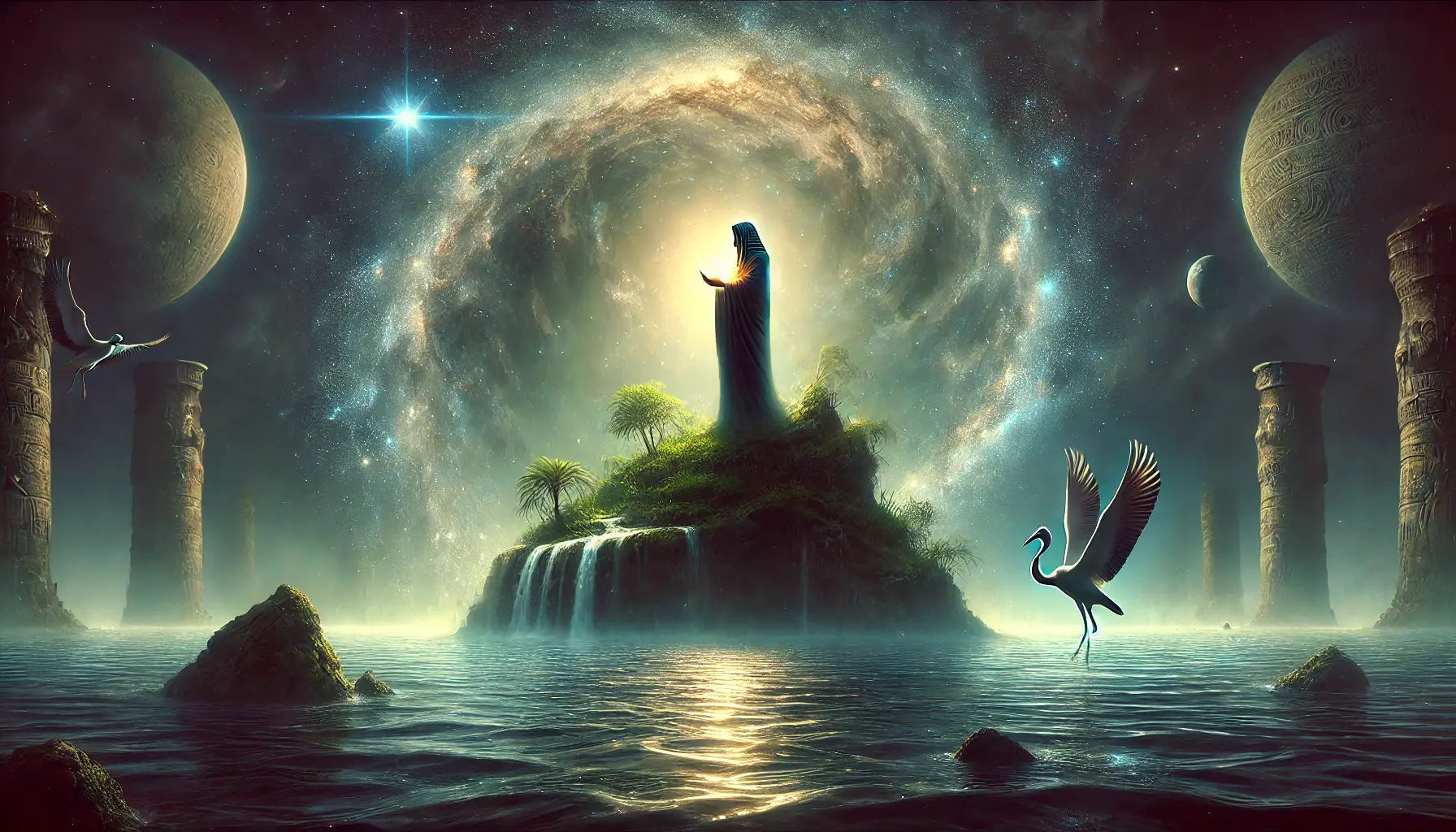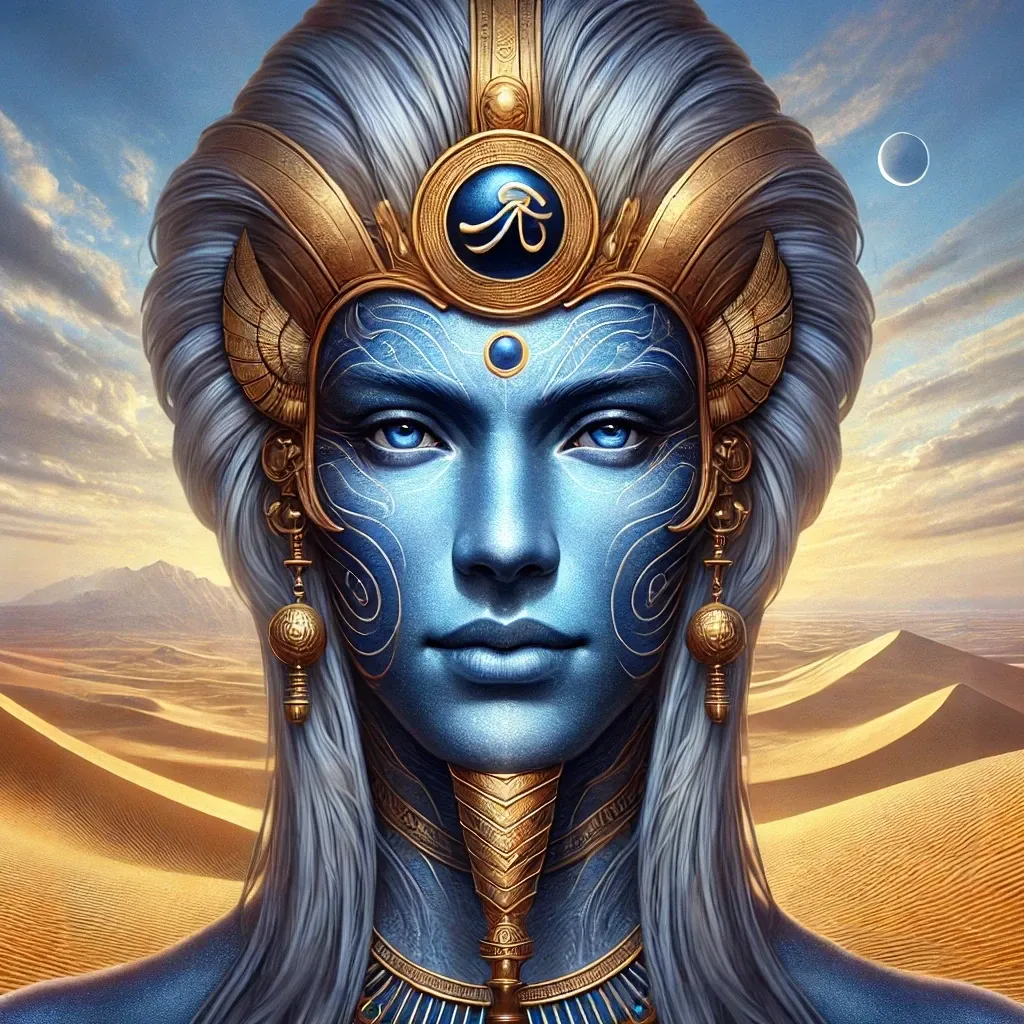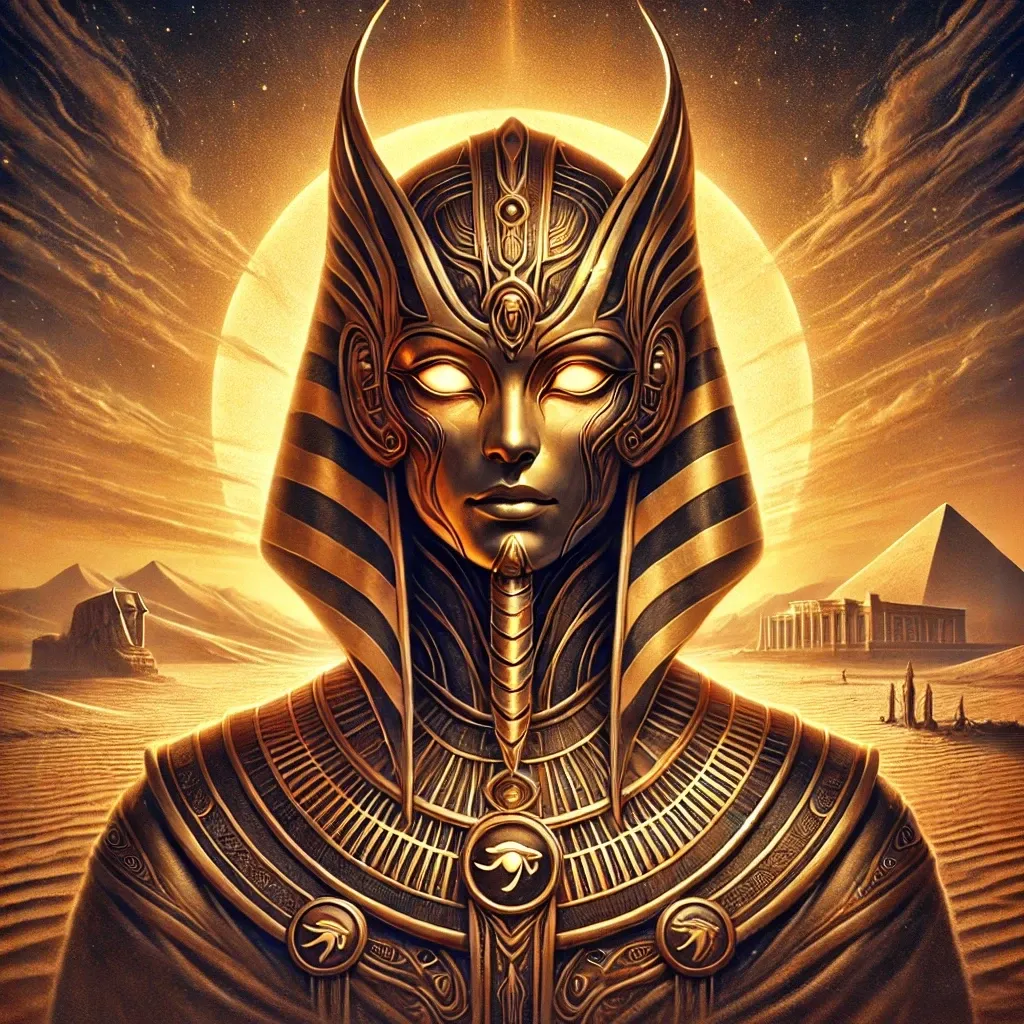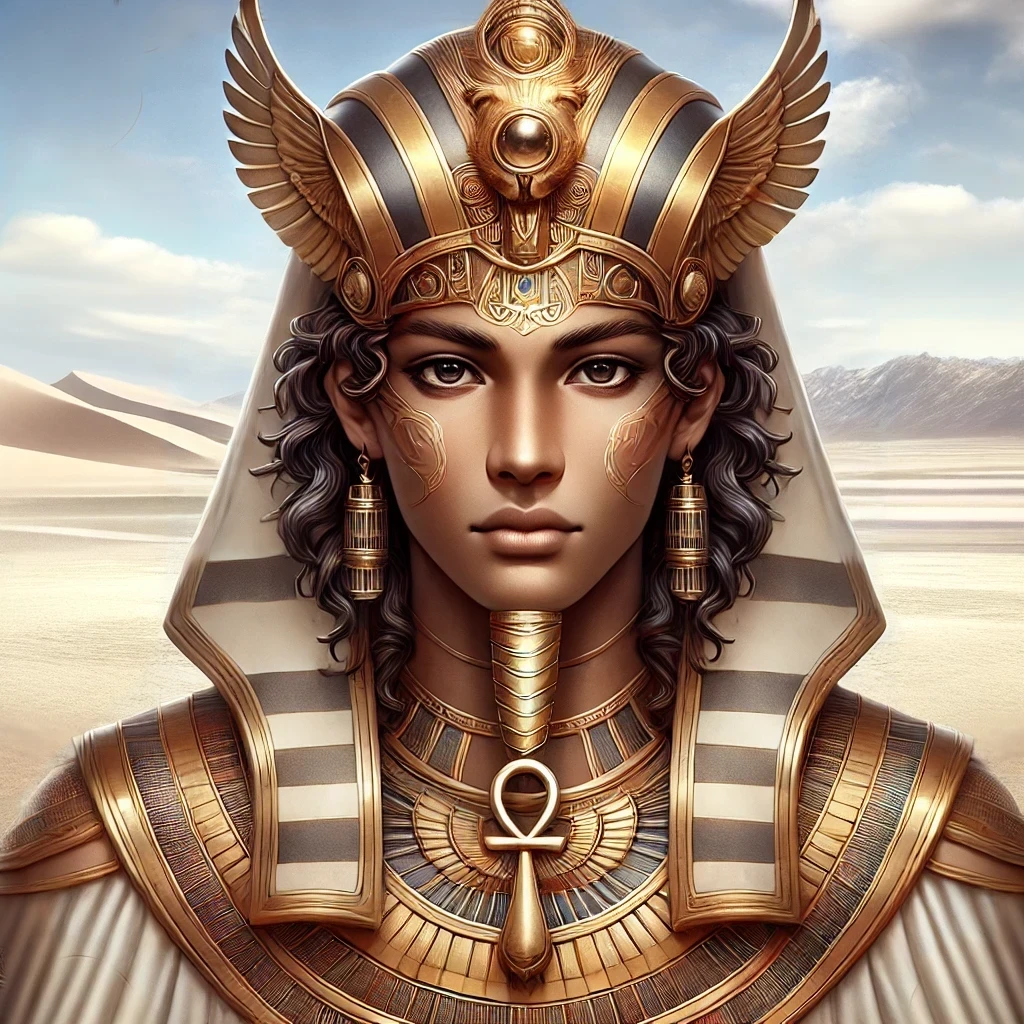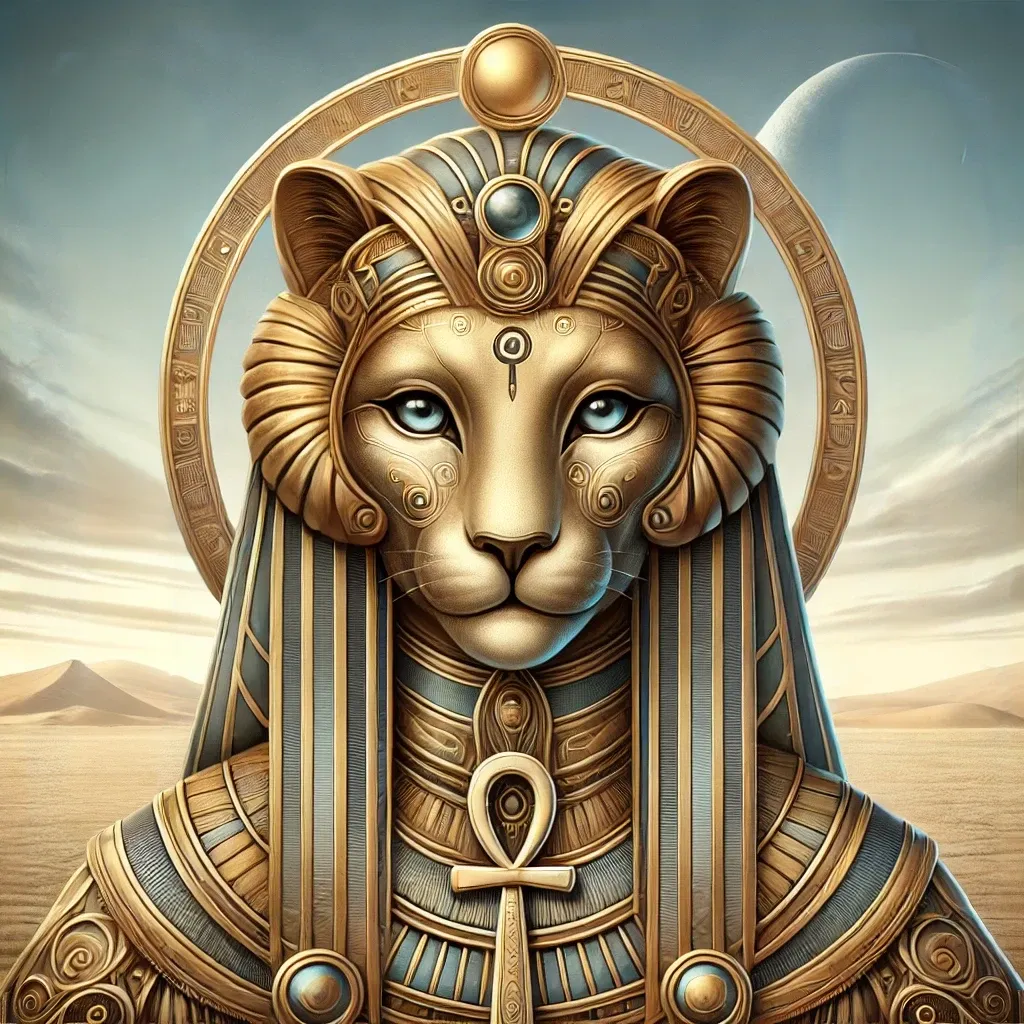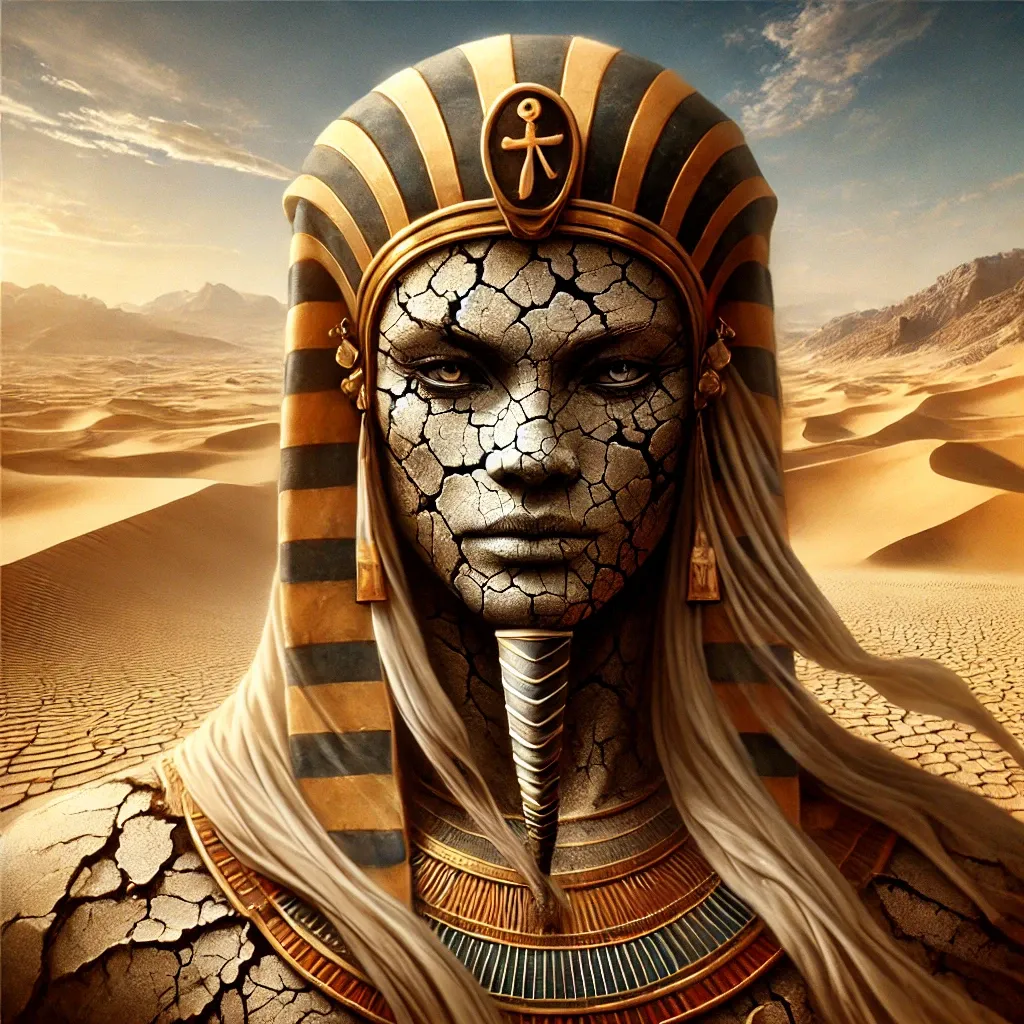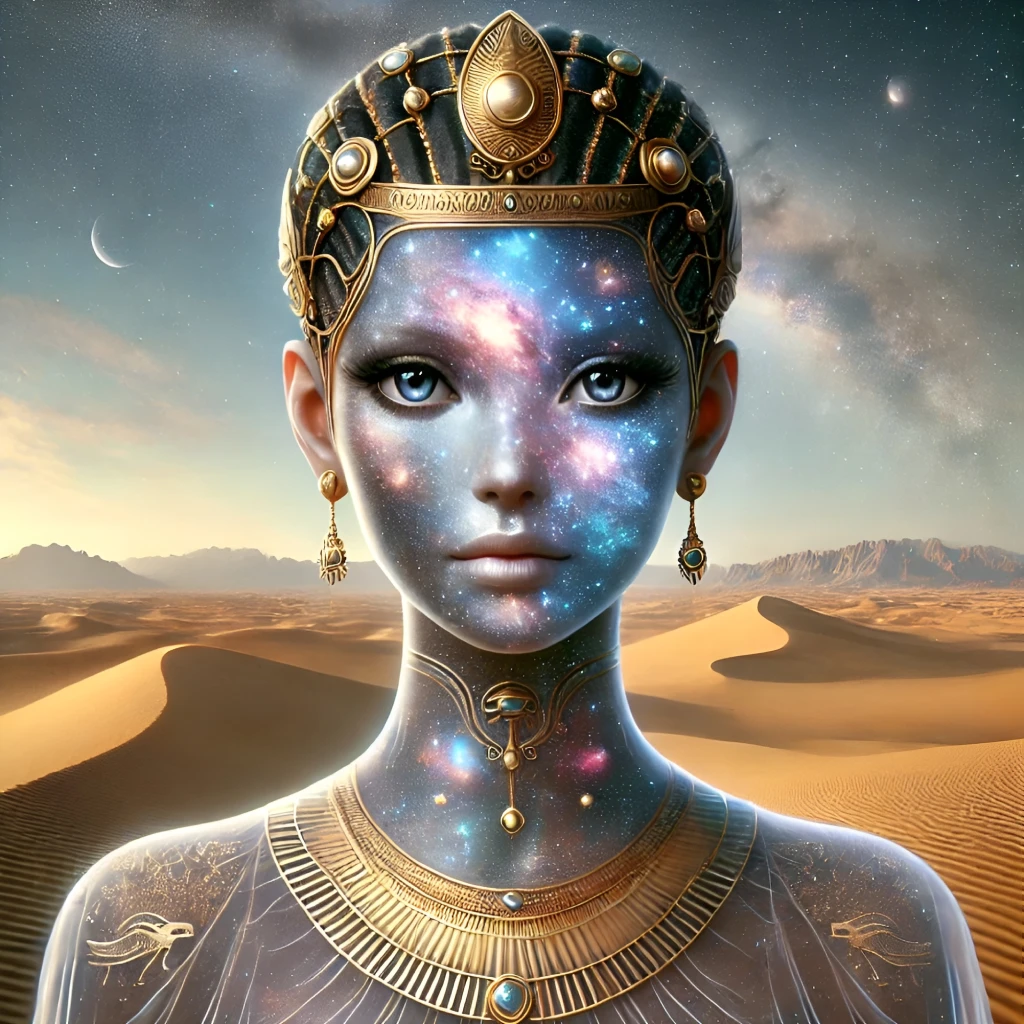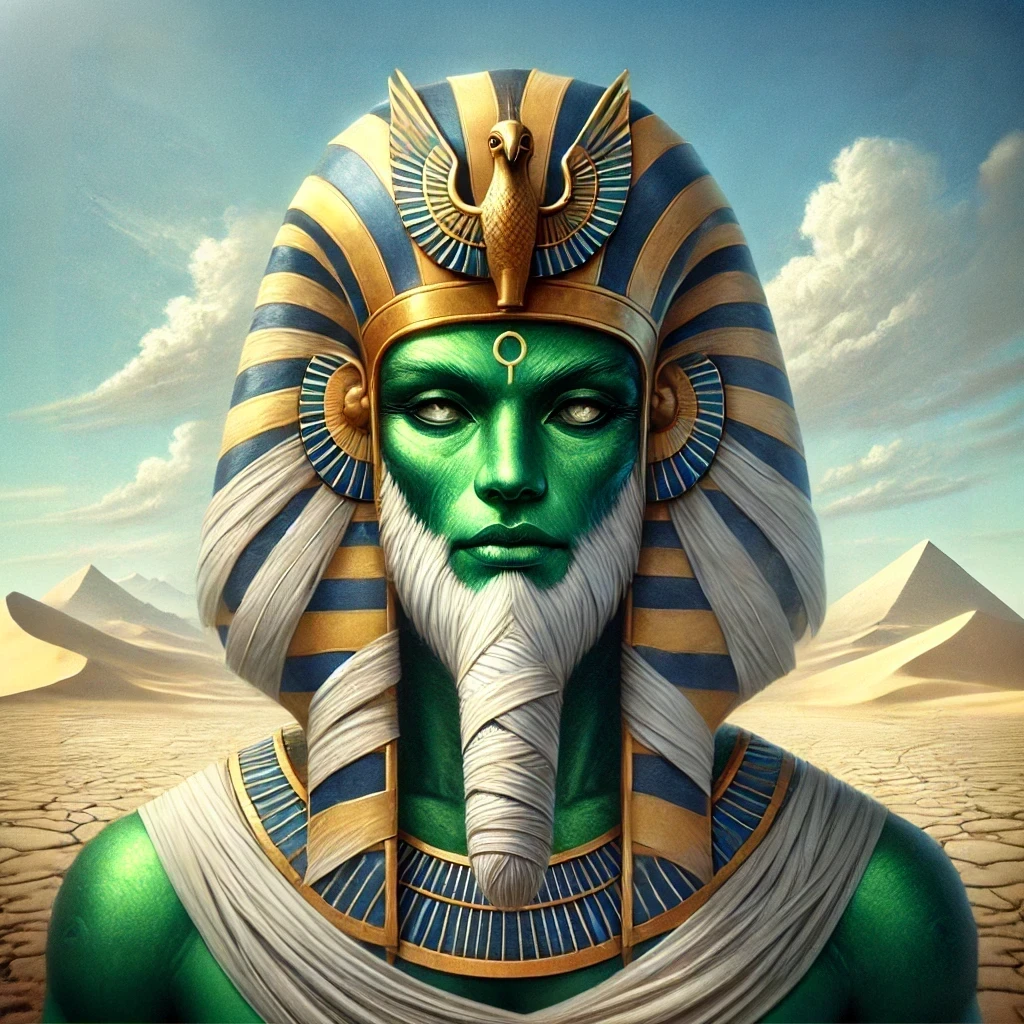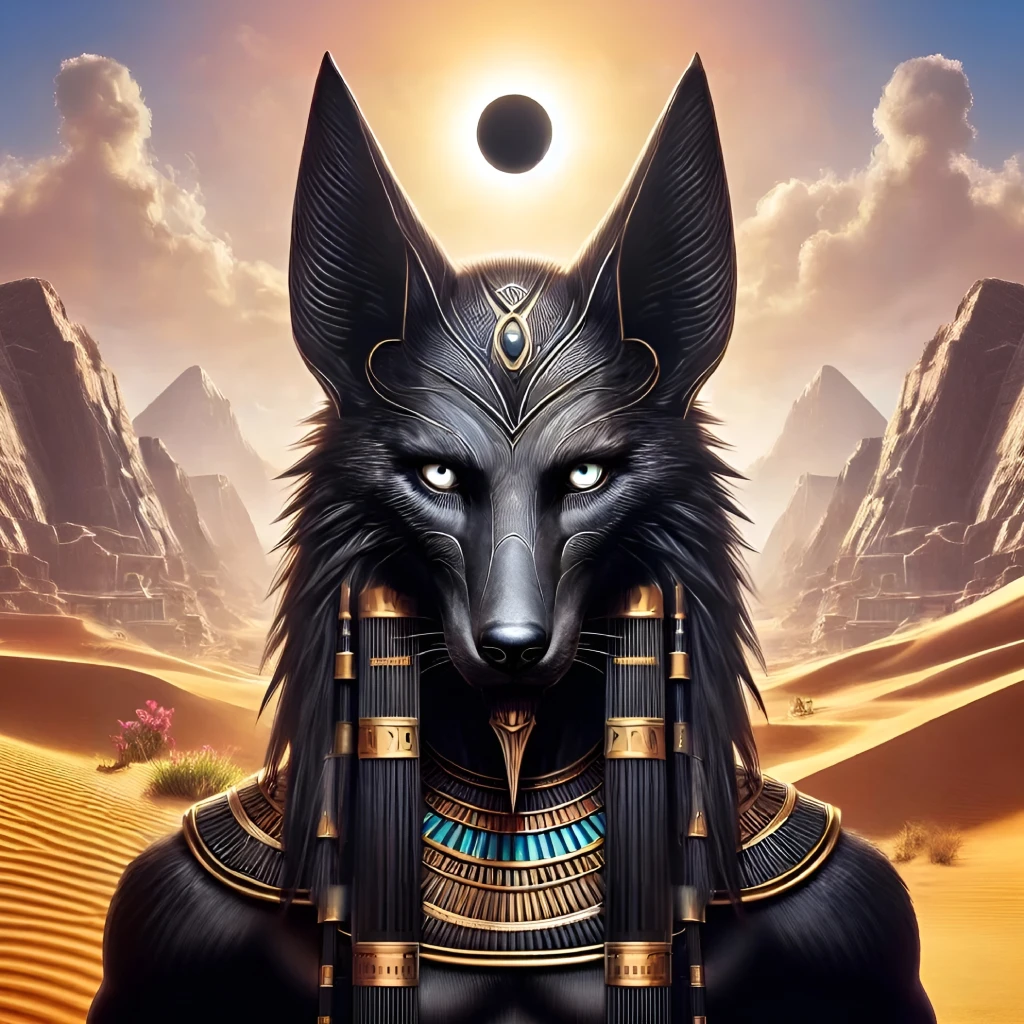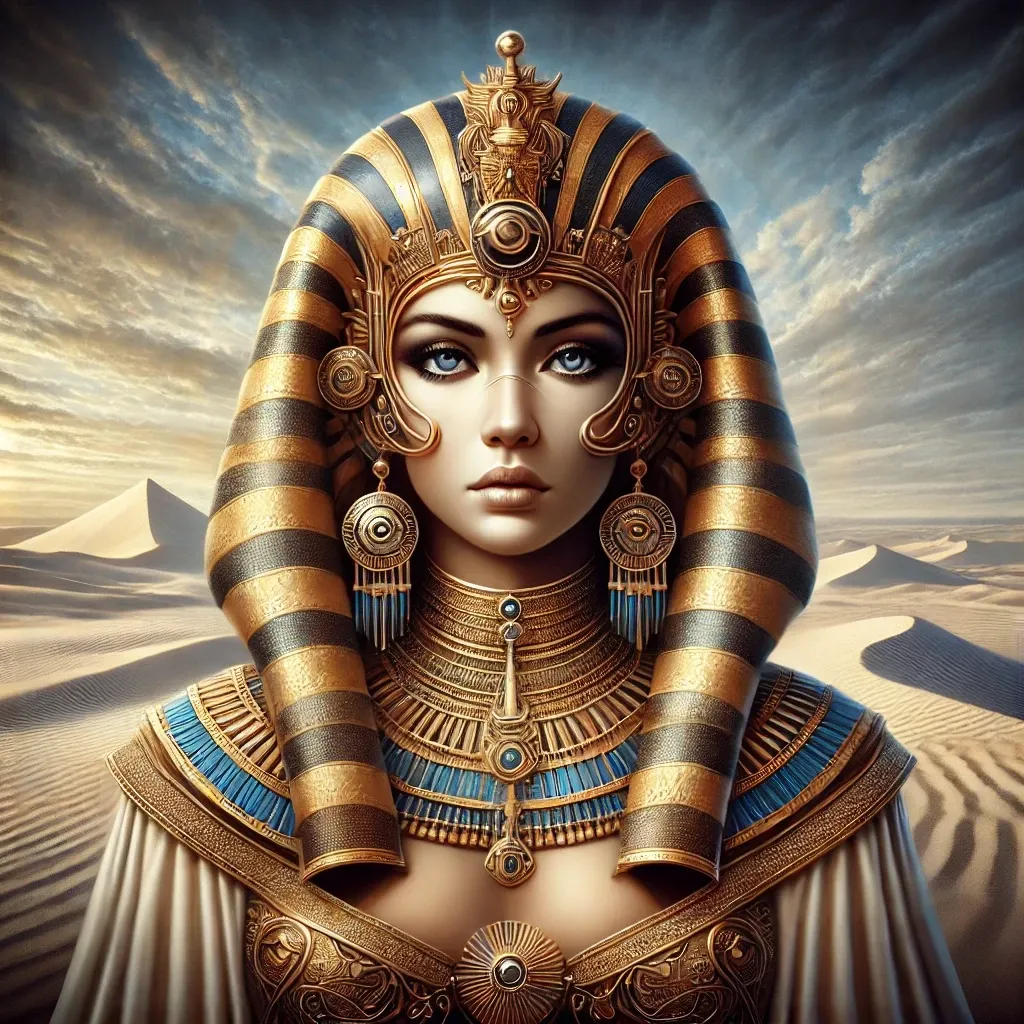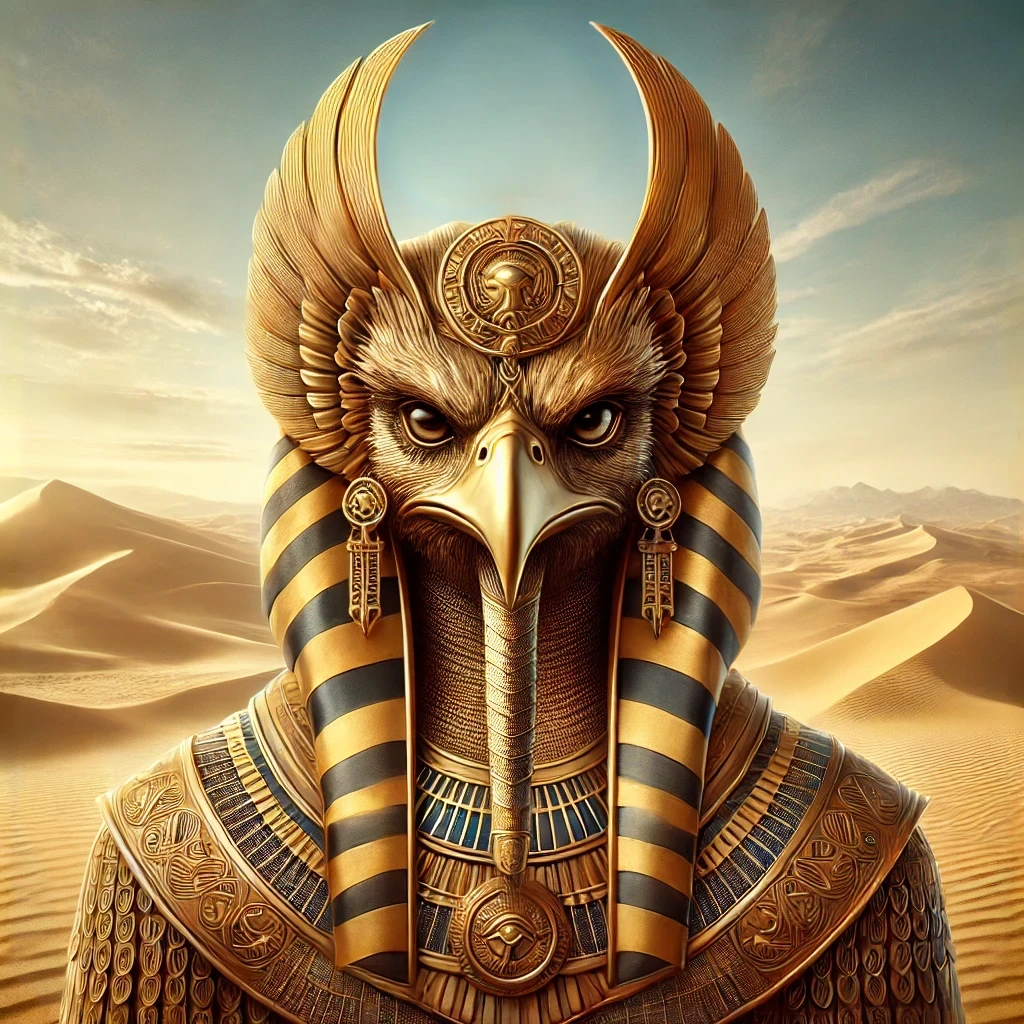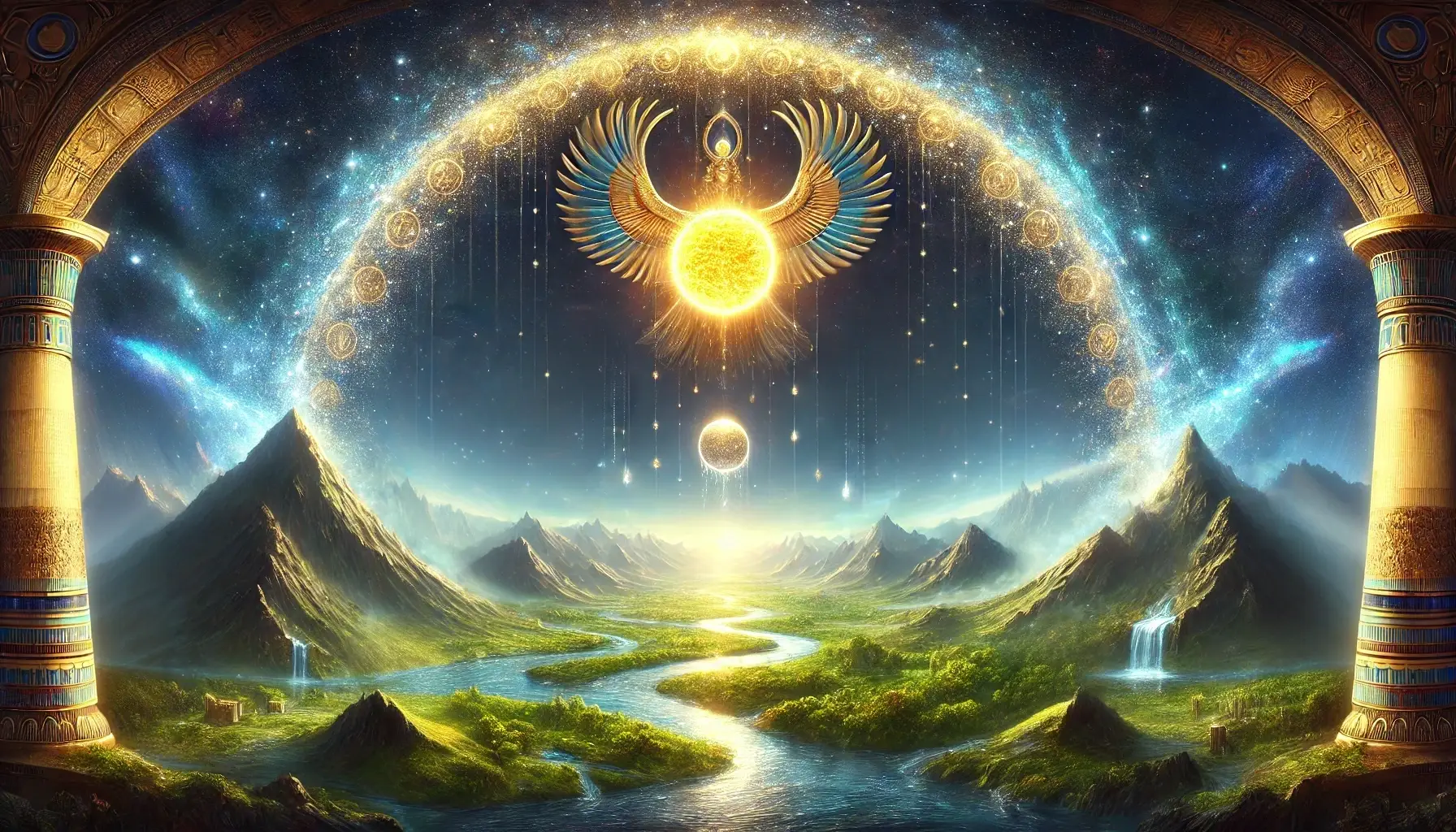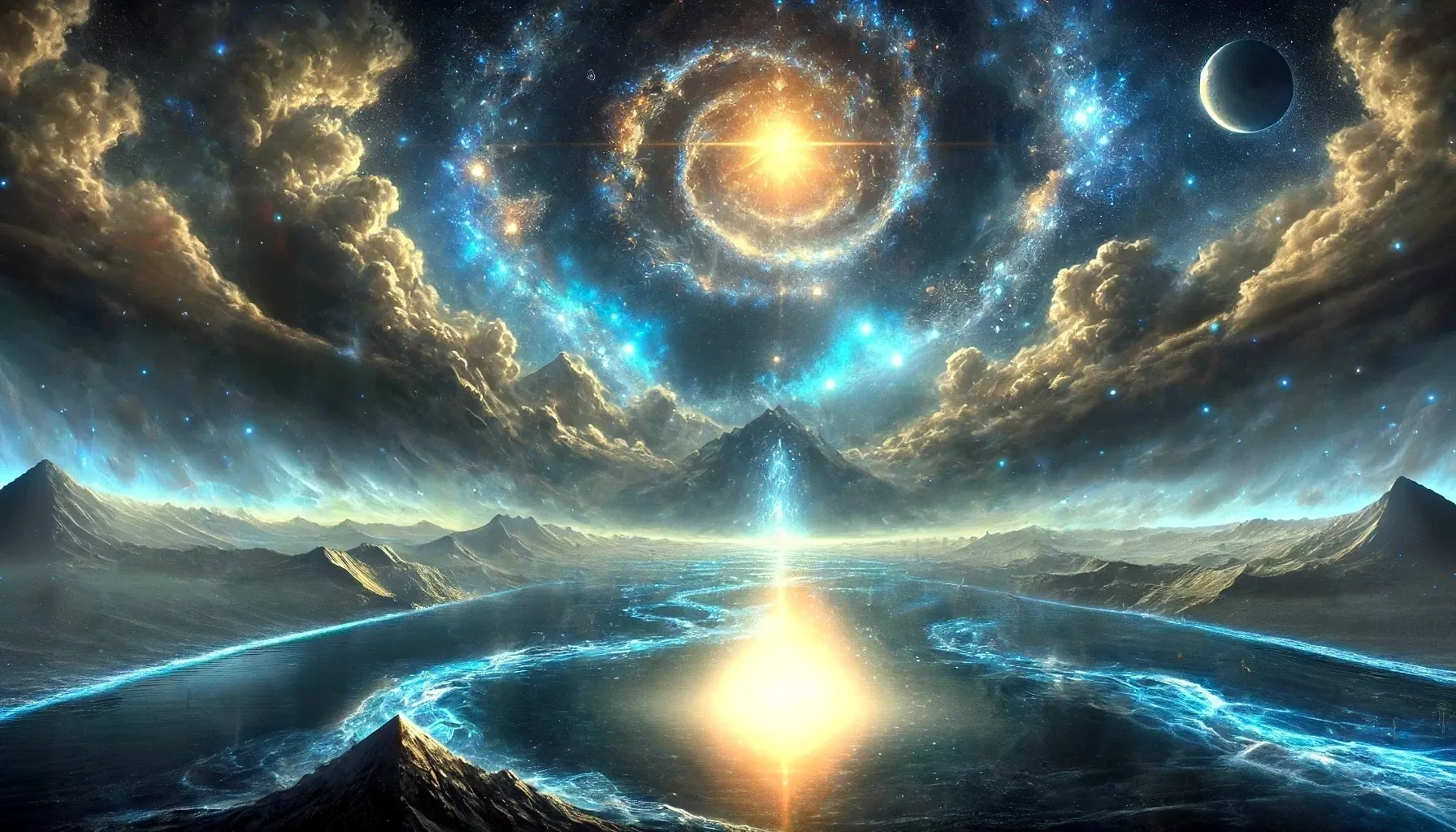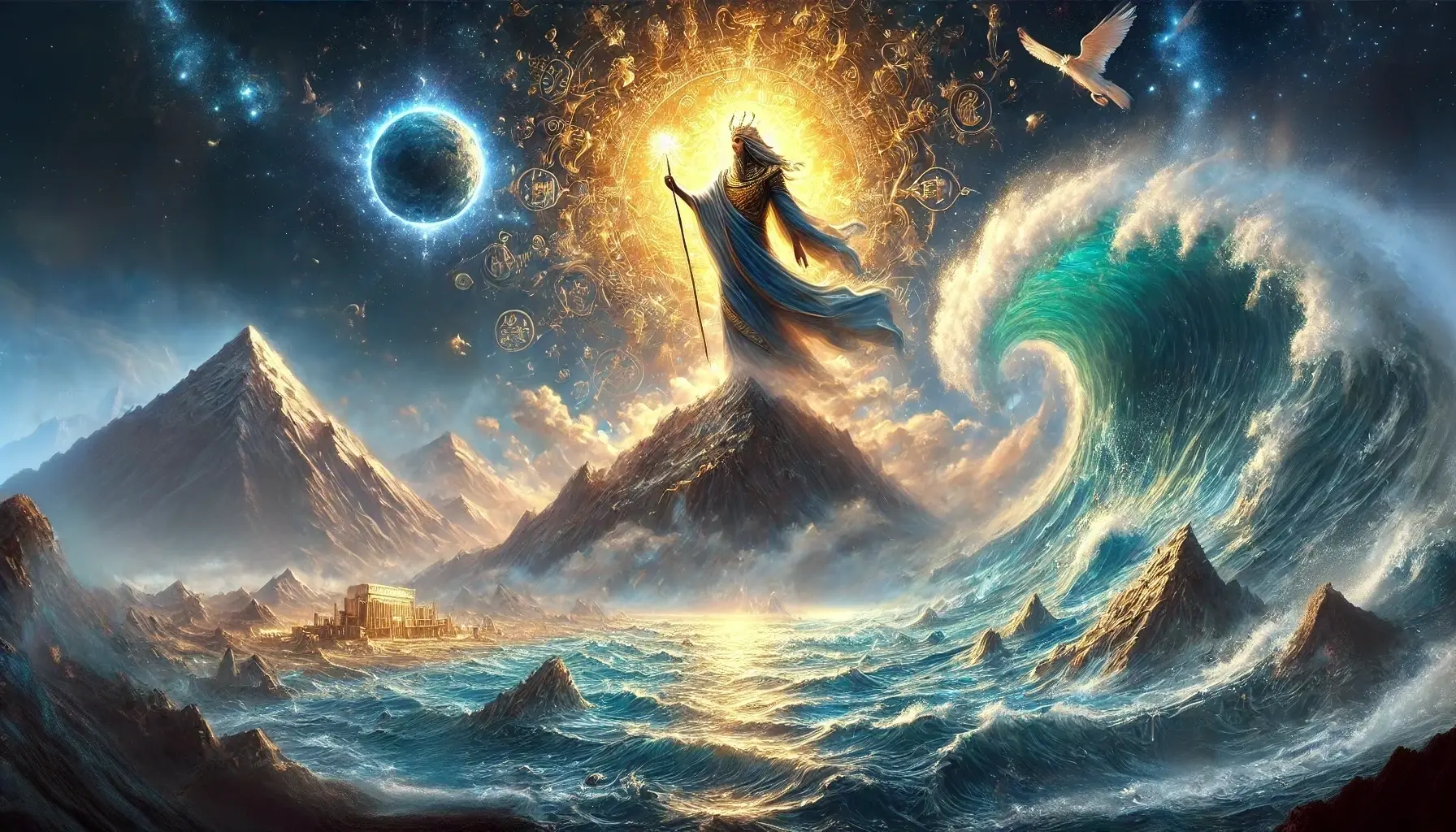The Dawn of Heliopolis
Before the worlds of men and gods took form, there was only the boundless Nu, the infinite and formless ocean. It was a realm without light, without land, and without direction, its currents carrying the weight of potentiality. In Nu, silence reigned supreme, but within that silence stirred Atum, the Hidden One. He was a spark of consciousness in the abyss, self-begotten and whole within himself, bearing the seed of creation in his solitude.
Atum willed himself into existence, his name a whisper against the eternal void. Alone, yet filled with purpose, he emerged upon the primordial mound, the benben, which rose from Nu’s dark waters. This sacred peak became the birthplace of all things, a fleeting island of order amidst the chaos of unbeing. Here, Atum declared his dominion, shaping the beginning of all that was to come.
The Birth of Duality
To dispel his loneliness, Atum reached within himself and brought forth his children, Shu, the god of air, and Tefnut, the goddess of moisture. Legends say that he gave birth to them through an act of great intimacy, spitting them into existence. The breath of Shu carried the lightness of the heavens, while Tefnut’s essence held the life-giving rains. Together, they embodied the first balance—the union of opposing forces that would govern the cosmos.
Atum watched them with pride as they ventured into the vastness of Nu, leaving the mound behind. But as time passed, the chaos of the abyss threatened to consume them, and they became lost. Atum’s heart grew heavy, fearing their destruction. He sent forth his Eye, a radiant and divine force, to search for them. The Eye traveled through Nu’s endless waters, its light cutting through the darkness until it found Shu and Tefnut and guided them home.
When they returned, Atum’s tears fell upon the benben, and where they touched, the first men and women sprang forth, born of divine sorrow and joy intertwined. Thus, humanity was woven into the fabric of creation, their origins tied to the gods and their trials.
The Foundations of the World
Reunited, Shu and Tefnut brought order to the void. From their union came Geb, the earth, and Nut, the sky. Geb lay beneath, firm and steadfast, while Nut arched above, her starry body a canopy of endless wonder. Yet their love was a force too great to contain, and they clung to one another, forming a primal embrace that left no room for the world to take shape.
Atum, recognizing the need for separation, commanded Shu to stand between them. With his strength, Shu lifted Nut away from Geb, creating the vast expanse of the heavens and the solidity of the earth. Though sundered, Geb and Nut’s longing endured; their tears became rivers, and their sighs filled the winds. Their love—now unattainable—imbued the world with both beauty and melancholy.
Upon the earth’s fertile soil, life began to flourish. Plants burst from Geb’s skin, nourished by the rains that fell from Nut. The rhythm of day and night was born as Nut swallowed the sun each evening and birthed it anew each dawn. The cycle of existence had taken root, a dance of harmony and longing set in motion by the divine family.
The Children of the Sky and Earth
From the union of Geb and Nut came four children: Osiris, Isis, Seth, and Nephthys. They inherited the complexity of their parents, each embodying facets of order and chaos. Osiris, noble and wise, took dominion over vegetation and the afterlife, while his sister-wife Isis embodied magic and motherhood. Seth, wild and destructive, became the force of disorder, and Nephthys, shadowed and enigmatic, walked the liminal spaces between.
Osiris and Isis brought civilization to humanity, teaching them agriculture, laws, and rituals. Their reign was one of harmony, a golden age where the gifts of the gods flowed freely. Yet, Seth’s jealousy festered, and he sought to unravel their order. With cunning and fury, he struck Osiris down, casting his body into the Nile.
The loss of Osiris plunged the world into mourning. Isis, stricken with grief yet resolute, searched tirelessly for her husband’s body. When she found it, she used her divine magic to reassemble him and conceive their son, Horus. Though Osiris could no longer dwell among the living, he rose as lord of the underworld, a guide for the souls of the dead. His death and resurrection echoed the cycles of the natural world—a perpetual renewal born of sacrifice and love.
The Eternal Struggle
Horus grew under Isis’s care, his destiny tied to avenging his father and reclaiming balance. When he came of age, he confronted Seth in a series of epic battles that shook the heavens and earth. Their conflict embodied the struggle between chaos and order, a cosmic duel mirrored in the lives of men.
At last, the gods convened to resolve the feud. They declared Horus the rightful ruler of the earth, yet Seth was not destroyed. Instead, he was given dominion over the deserts and storms, his chaotic nature necessary to balance creation. Through their struggle, the gods affirmed that harmony is not the absence of conflict but its resolution through balance.
The Veil of Eternity
As the ages passed, the deeds of the Ennead became myth, their names whispered in prayers and etched upon temple walls. Yet their essence endured, woven into the rhythms of the Nile and the lives of its people. The sun’s daily journey across the sky, the flooding of the river, and the cycles of birth and death all bore the imprint of their divine actions.
One night, as the moonlight bathed the sacred city of Heliopolis, a solitary ibis stood upon the benben. It gazed at the heavens where Nut’s stars shimmered, eternal and unyielding. The air was thick with the scent of lotus blossoms, their petals unfolding in the cool night breeze. A ripple stirred the waters of a nearby pool, and in its reflection, the stars seemed to dance, their light quivering like the first moments of creation.
In that stillness, a vision unfolded—of Atum standing once more upon the mound, his hands cupped around a fragile flame. His eyes, weary yet resolute, gazed into the infinite darkness. The flame flickered, casting fleeting shadows that hinted at worlds yet to be. As it dimmed, Atum spoke, his voice a murmur against the abyss: “From chaos, we rose. To chaos, we return. Yet within the darkness, I am.”
The ibis spread its wings, lifting into the night, its form a silhouette against the moonlit sky. Below, the waters stilled, their surface smooth as polished stone. The world held its breath, as if the cosmos itself paused to remember the fragile beauty of creation’s first light. And then, with a whisper of wind, the moment passed, leaving only the stars to witness eternity.
